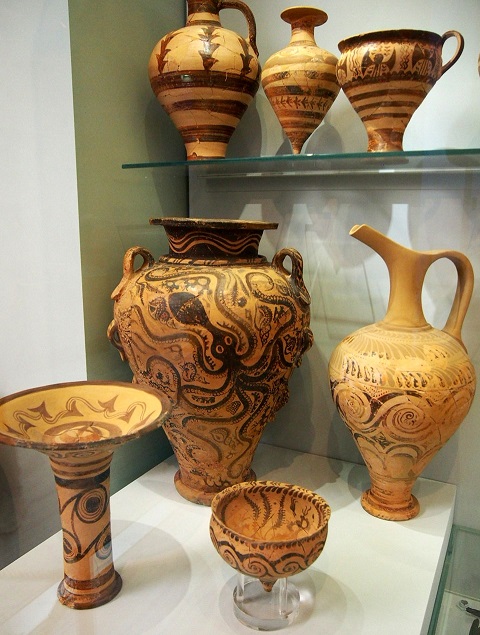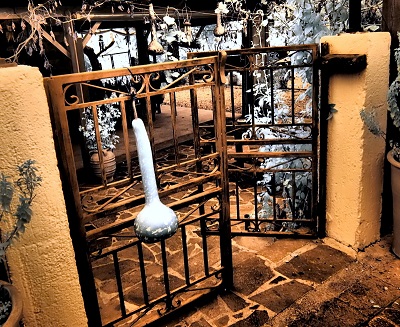Migrating Gourds
Long-handled gourd (credit: Manolis Avarmakis/Natural History Museum of Crete)
Plants have moved back and forth between cultures for as long as people have migrated across the Earth. Neanderthals remembered their dead by buring them with bouquets of flowers. Tomatoes, potatoes, and corn originated with the Incas and Aztecs but are now staples in every cuisine and diet on the planet. Anyone will remember giving a plant or receiving one from a friend or family member. So to, is the story of a humble gourd grown by Africans for carrying water in the bush and used as a musical instrument for enjoyement. The Minoans on Crete used the Long-handled gourd (Lagenaria siceraria) to carry water while tending their livestock on the island’s mountainous terrain as well.
The vines have been grown on the island since the Bronze Age, ~3300-1200 BCE. Their advanced civilization was headquartered there more than a thousand years before the classical Greeks, who built the Parthenon, in Athens. King Tut may have received Minoans to his palace as Egyptian hieroglyphs have recorded visitors from their island baring gifts for the pharaoh. The ancient Minoans were international traders with fast sailing vessels and inter-connected commercial networks who traded around the Mediterranean including Egypt, Sicily, Turkey, North Africa, and beyond. Their raw material supply-chains for making bronze would impress anyone today. Seeds of the ancient vines could have easily arrived via any of their African trading partners.


Minoan gourd-like jugs (Archeulogical Museum Crete) Heirloom Long-handled gourd, Crete (credit: SWP Media)
Contemporary Long-handled gourds are grown on and decorate garden trellises, walls, and whatever structure is available so the fruit can hang down. One New Zealand enthusiast offers a tutorial on 'how to' grow these super-heirloom gourds in your own garden or patio arbor. It is not required to visit Crete to grow these plants but you'll be connected to an ancient past if you do. WHB